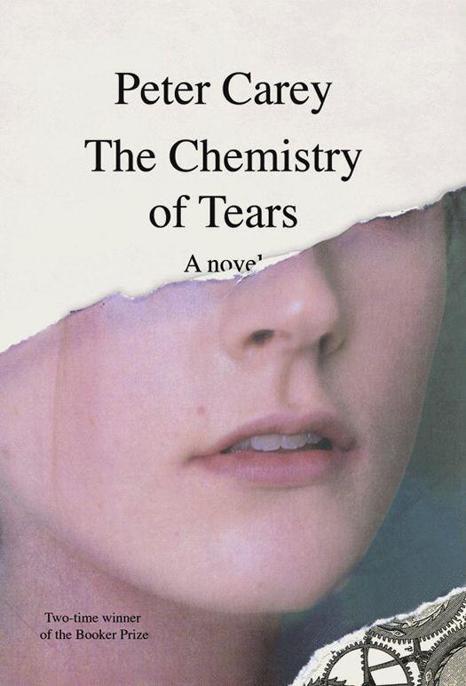
The Chemistry of Tears
کتاب های مرتبط
- اطلاعات
- نقد و بررسی
- دیدگاه کاربران
نقد و بررسی

Starred review from April 23, 2012
After the sudden death of her married lover, London museum conservator Catherine Gehrig channels her grief into the task of restoring a 19th-century automaton, in Carey’s powerful novel on the frailty of the human body and the emotional life we imbue in machines. Catherine, a horologist at the Swinburne Museum, and curator Matthew Tindall carried on a secret affair for 13 years. After Matthew dies of a heart attack, Catherine’s boss assigns her a project in the Swinburne Annex, away from the gossip. Numb with heartache, she’s uncharacteristically uninterested in opening eight sealed tea chests until the day of her lover’s funeral, when she discovers inside the chests 11 notebooks filled by Englishman Henry Brandling in 1854. The narrative then shifts to Henry’s point-of-view with his discovery of the inventor Vaucanson’s plans for a mechanical duck, just the thing, Henry thinks, to make his young consumptive son, Percy, happy. He travels to Germany in search of a master clockmaker, and Carey (Parrot and Olivier in America) alternates between present-day Catherine’s progress with repairing the avian automaton and Henry’s notebooks, about which Catherine becomes more obsessed as Henry meets a mysterious and potentially dangerous craftsman who promises to build him his “heart’s desire.” Catherine and Henry, linked both by the automaton and by grief, ponder questions of life and death, questions that, as posed by Carey, are more fascinating than any solution. Agent: Amada Urban, ICM.

May 1, 2012
A puzzling novel that doesn't reveal its secrets easily. The latest from the renowned and prolific Carey (Parrot and Olivier in America, 2010, etc.) is too fanciful to pass as realism yet too inscrutable for parable or fable. Though all of it (or at least half of it) concerns a grieving woman's attempt to re-engage with life after the death of her married lover, the prevailing spirit is comedic, even whimsical, rather than tragic. And the prevailing metaphor is that of clockwork, the mechanical precision of the museum where she serves as a curator, with "a considerable horological department, a world-famous collection of clocks and watches, automata and other wind-up engines," a place where "for years I thought clockmaking must still any turmoil in one's breast. I was so confident of my opinion, so completely wrong." To keep protagonist and occasional narrator Catherine from going haywire, her supervisor assigns her an archival task: to study the diaries of a man who had commissioned a mechanical duck for his ailing son more than a century earlier. Some chapters are all Catherine, some are from the diaries of Henry and his adventures with the mechanical duck, and some mix the two, though the reader must make leaps of conjecture to connect the writing of Henry and the response from Catherine. Then the plot thickens, as it appears that the circumstances surrounding her affair were more complicated than Catherine had realized, and she comes to suspect that the pages she reads were written specifically for her: "He anticipated someone would watch him through the wormhole, that was clear. He wrote for that person." While reading about the attempts to construct a mechanical duck that would appear animated, practically alive, Catherine feels herself turning into a machine: "Ingest, I thought, digest, excrete, repeat." For what it's worth, the thematic key would seem to be a Latin epigram, which translates, "You cannot see what you can see." It's a novel that will amuse or challenge some and frustrate others.
COPYRIGHT(2012) Kirkus Reviews, ALL RIGHTS RESERVED.

December 1, 2011
Twice a Booker Prize winner and a Commonwealth and Miles Franklin honoree as well, the incomparable Carey returns with a story of secret grief assuaged. A museum conservator in London, Catherine learns that her lover and colleague has died but hides her pain because he was a married man. Her boss, the only person who knew of her affair, seeks to help by having her work alone on a project involving a 19th-century automaton. When she discovers the diaries of Henry Brandling, the man who built the automaton, she enters into an understanding of the desire for invention, the magic of creation, and the healing power of love. An A-plus purchase.
Copyright 2011 Library Journal, LLC Used with permission.

April 1, 2012
Carey (Parrot & Olivier in America, 2010) is a bewitching storyteller preternaturally attuned to our endless struggles over love and eccentric obsessions. In this fairy tale within a fairy tale rife with historical and literary allusions, Catherine, a horologist (an expert in the science and instruments of measuring time) on the staff of a London museum, is mad with grief after the sudden death of her married lover and struggles to focus on the new restoration project her sympathetic boss hopes will comfort her. She does become enthralled by the notebooks of Henry Brandling, a wealthy nineteenth-century Englishman who went to Germany to commission an automaton for his ailing son, only to come under the spell of Sumper, a hulking, vehement inventor who may be a thief, brute, genius, or all three. As she unfolds Henry's mysterious ordeal, Catherine meticulously reconstructs Sumper's elaborate, mechanized wonder, work complicated by her increasing fears about her possibly deranged assistant. Set during the Gulf oil crisis and reminiscent of The Invention of Hugo Cabret (2007) in its linkage of a rescued automaton and loneliness, Carey's gripping, if at times overwrought, fable raises provocative questions about life, death, and memory and our power to create and destroy. HIGH-DEMAND BACKSTORY: Two-time Booker Prize winner Carey's sterling reputation, a hefty first printing, and the novel's echo of the book behind the Oscar-winning film Hugo make this a hot title.(Reprinted with permission of Booklist, copyright 2012, American Library Association.)

























دیدگاه کاربران